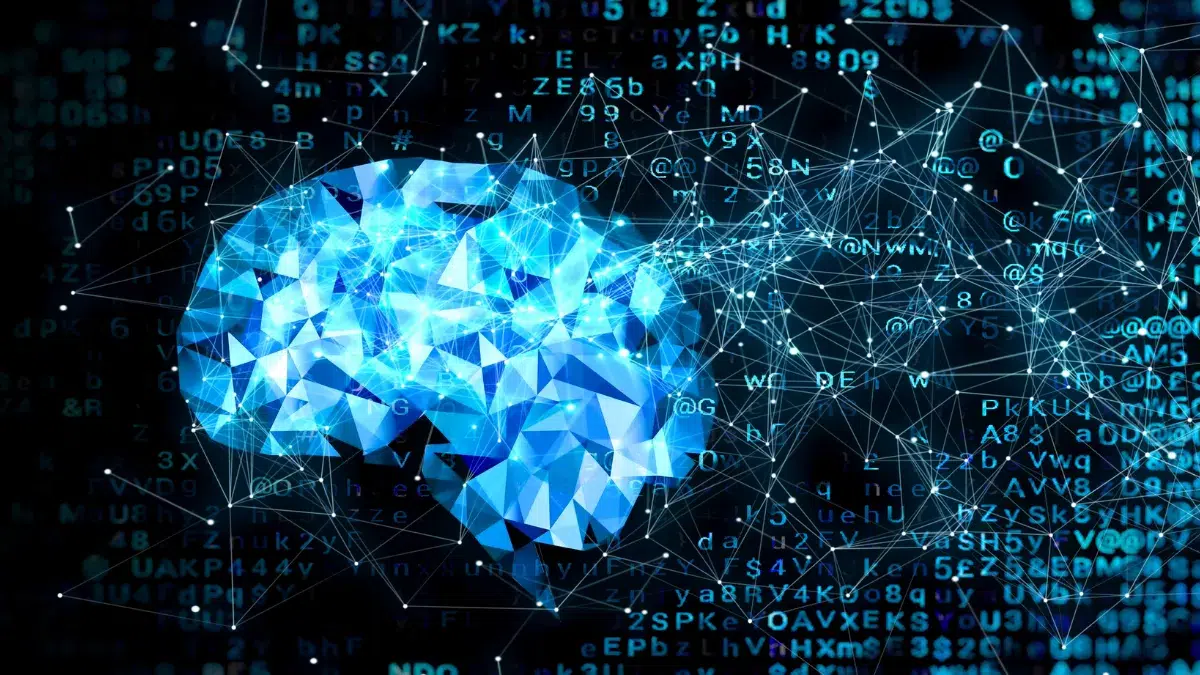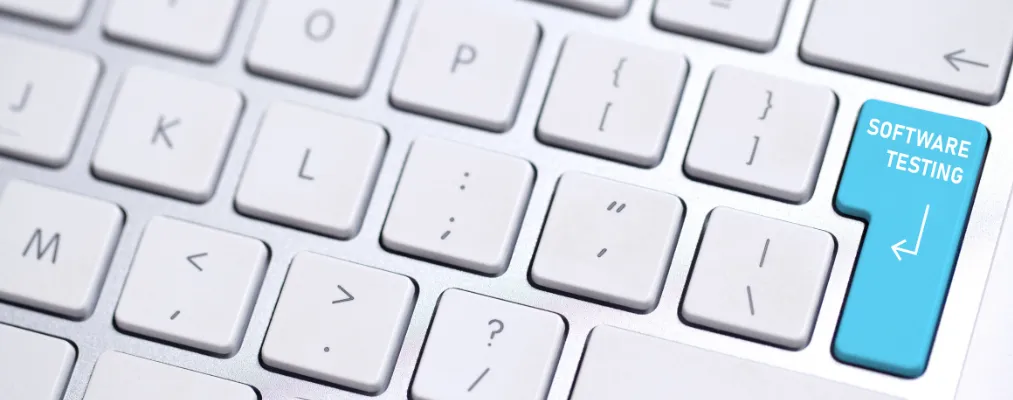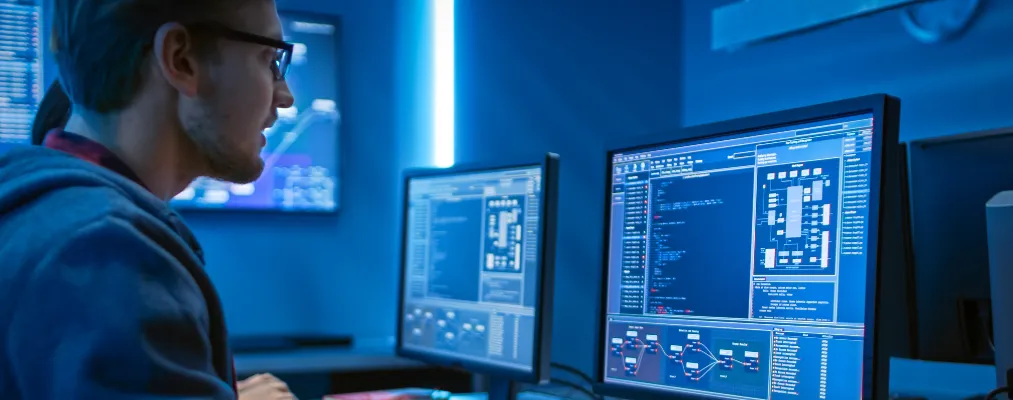We’ve written about machine vision and artificial intelligence in the past, whether discussing how it can be used to analyze social media traffic, or how it can be used to target consumers to improve your marketing efforts. This time, however, we look at some innovative ways that machine vision can be deployed. Specifically, we explore the following examples:
- Image identification and classification
- Facial recognition
- Product and component assembly
- Tracking and tracing
- Handwriting analysis
Microsoft Cognitive Services – Vision API
Microsoft recently released a new addition to their Cognitive Services ecosystem called the Vision API. Using the API, you can supply it with images and the API will detect the presence of text, and even attributes that belong to the image. You can see this in the image below:

Text Recognition
Another great feature of the API is its ability to also identify text from notes or letters (even handwritten ones too!)

Being able to point a machine to images that contain text, rather than input it manually can be a massive productivity boost for businesses and has the potential to optimize business processes in many sectors such as logistics or supply chain management.
[bctt tweet=”Being able to point a machine to images that contain text, rather than input it manually can be a massive productivity boost for businesses” username=”GAPapps”]
Image Tagging and Classification
Tagging attributes in images and reading text is only the tip of the iceberg. The API can also identify over 2,000 recognizable objects such as living beings, inanimate objects, and scenery. When classifying images, the API can determine if the supplied image belongs to 1 of 86 categories, some of these include, but are not limited to:
- Food
- Transport
- Scenery
- Animal
- Plants
- …and much more!
By using some of the features in this API, business is finding ways to build innovative machine vision-powered solutions that are making a real difference to people’s lives, which brings us onto our next example:
Helping the visually impaired
Pivothead is a firm that produces wearable technology and has customers in over 60 countries that have bought over 50,000 of their wearable devices. Leading brands such as Airbus, GE and research facilities such as the UCLA Children’s Hospital of Los Angeles all used products by the firm.
One of their products is an eyewear device that lets its users shoot high-definition video, whilst also capturing still images at the same time. By using the Vision API, Pivothead has been able to build technology that incorporates software that translates images to text and speech in real-time, thereby helping blind or visually impaired users “see” the world in front of them!
Unlocking the value in video
Prism, a firm whose origins lie within the retail space are leveraging the power of artificial intelligence and computer vision to build solutions that let its customers search video from multiple cameras that are connected to the firm’s platform “Prism Skylabs”.
The firm received approximately $30 million in VC from investors such as Andreessen Horowitz, Intel Capital, and Data Collective to form the spinout. After forming strategic partnerships with major camera manufacturers (that represent approximately 80% of the market), the firm went onto build a platform that makes it easier for its customers to view, summarize and search video content from any camera that has been connected to the system.
Prism Skylands see many use cases for their technology such as:
- Hospitality
- Supply chain management
- Retail
Facial Recognition using the Microsoft Face API
Another machine vision API worth mentioning (that also belongs to the Cognitive Services family) is the Face API. The Face API is an innovative AI-powered machine vision service that resides in Microsoft Cloud. It contains many advanced features centered around (as you might have already guessed!):
- Face detection
- Identification of attributes
- Emotional recognition
Face Identification and Verification
When deployed, the Face API lets you detect what are known as “face rectangles”. Each rectangle has an associated set of attributes, some of which include: gender, smile, the existence of facial hair, age and emotion.
Uber
Microsoft only released this service in 2016 but it’s already being deployed in many use cases. The ride-sharing company Uber used the Face API to ensure the safety of passengers and drivers alike by tapping into the power of the Face API!
Component Assembly
Manufacturing plants need to ensure products or components that are processed on the production line adhere to quality, safety and production guidelines. Acquire Automation have a machine vision solution that gives manufactures this reassurance. The solution can help businesses ensure their product and component assembly standards are being enforced. It’s able to do this by using 360-degree visual devices as items make their way through the production line. It can verify that products are placed in the correct packaging, if caps are closed, if the positioning is optimal and even if the correct label has been added.
All of which increases the throughput of the production line, reduces the number of product recalls, boosts productivity for business and ultimately keeps consumers happy!
Pharmaceuticals, tracking and tracing
Understandably, pharmaceutical firms adhere to stringent rules and regulations to ensure that the medication they produce can be tracked and traced from the production line to the end patient.
One way this can be done is by printing details that include, serial numbers, expiration dates, manufacturing dates onto containers. A globally unique identifier, often known as a GTIN (Global Trade Item Number) can also be used to track packages worldwide.
Manufacturing systems, powered by software, can auto-generate GTINS in a master database which is then used later in the production process and sprayed onto containers.
The next step of the production process can then begin which involves the verification of the information that was just sprayed onto the carton packaging. And it’s this specific task that a German firm called ISW have built a machine vision solution around.
ISWs solution integrates high-definition cameras that can read data from labels (including the reading of text). When the data or text from the container has been ingested by the system, it can then validate this against the record stored in the master database to see if both match.
If printed codes are unreadable or don’t match existing codes in the master database, then items can be rejected thereby ensuring the correct information has been applied to the pharmaceutical container, and the packaging is correct.
Summary
In this blog post, we’ve looked at some innovative uses for machine vision. We’ve looked at how it can be used to help the visually impaired and how it can also unlock actionable data in video footage.
We hope that by reading this we’ve given you some more awareness of the various applications that machine learning can have.
Here at Growth Acceleration Partners, we have extensive expertise in many verticals. Our nearshore business model can keep costs down whilst maintaining the same level of quality and professionalism you’d experience from a domestic team.
Our Centers of Engineering Excellence in Latin America focus on combining business acumen with development expertise to help your business. We can provide your organization with resources in the following areas:
- Software development for cloud and mobile applications
- Data analytics and data science
- Information systems
- Machine learning and artificial intelligence
- Predictive modeling
- QA and QA Automation
If you’d like to find out more arrange a call with us.










